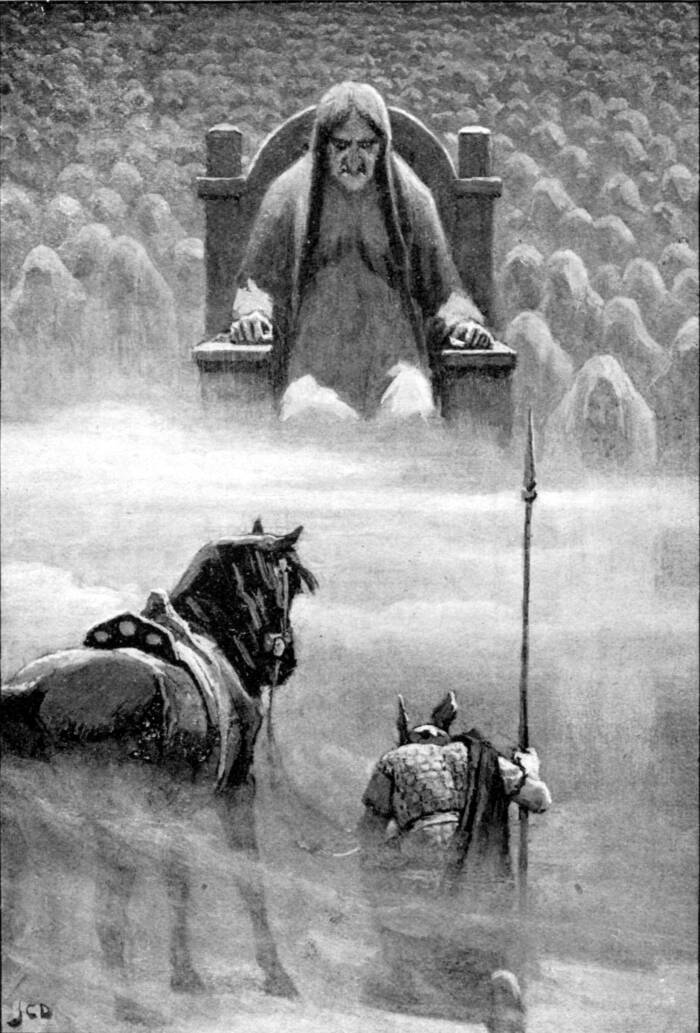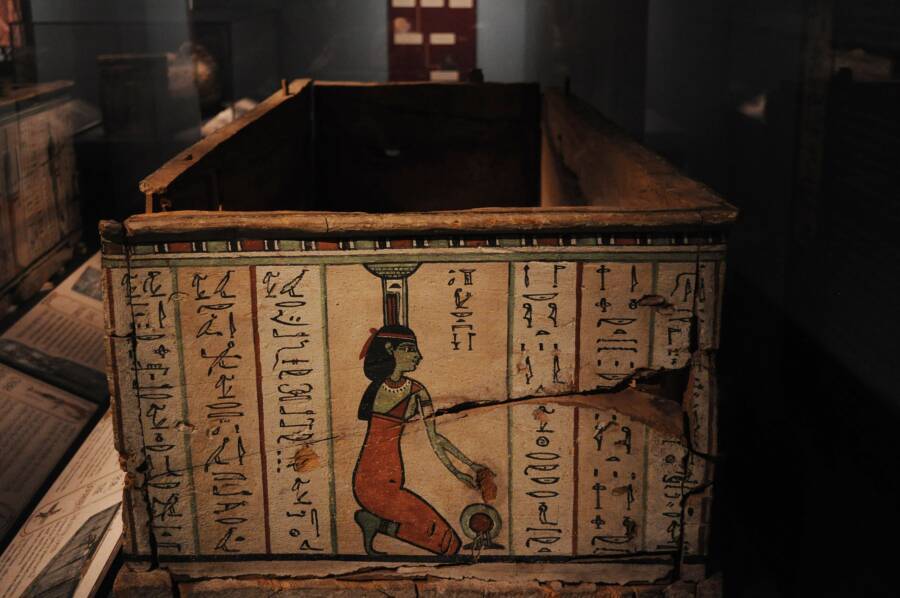Goddesses Of Death From Around The World
In addition to gods of death, many ancient cultures believed in goddesses of death. Some have already been mentioned here, including Mictēcacihuātl, the Aztec goddess who ruled with her husband Mictlāntēcutli.
Another death goddess is Hel, the terrifying goddess of death in Norse mythology. The ruler of the underworld, known as Helheim or Niflheim, Hel played a similar role to Hades. Though warriors went to Valhalla, those who died of sickness or old age came to her. Odin tasked Hel with “appoint[ing] abodes to them that are sent to her.”

Public DomainHel, the Norse goddess of death.
Meanwhile, the Hindu faith includes a goddess of death called Kali. Kali is associated with the cycle of life and is thus often linked to themes of time, doomsday, motherly love, and death. Often portrayed with blue or black skin, Kali is known to carry a necklace of skulls and wear a skirt made of human arms.
A death goddess who demands sacrifices, Kali is a far cry from Nephthys, the Egyptian goddess tasked with protecting mummies. Associated with vultures, she is sometimes considered to be the mother of Anubis, the jackal death god described above.

Washington State History Museum/Wikimedia CommonsNephthys, an Egyptian goddess of death associated with protecting mummies.
Though cultures across the world developed in different ways, each faced the challenges of death. And each decided how to interpret it. Death gods — and death goddesses — thus came out of a deeply human desire to make sense out of grief and loss.
After reading about some of history’s most fearsome gods of death, discover the stories of some of the most fascinating Sumerian gods. Or, learn about the Druids, the mysterious spiritual leaders of the ancient world.





